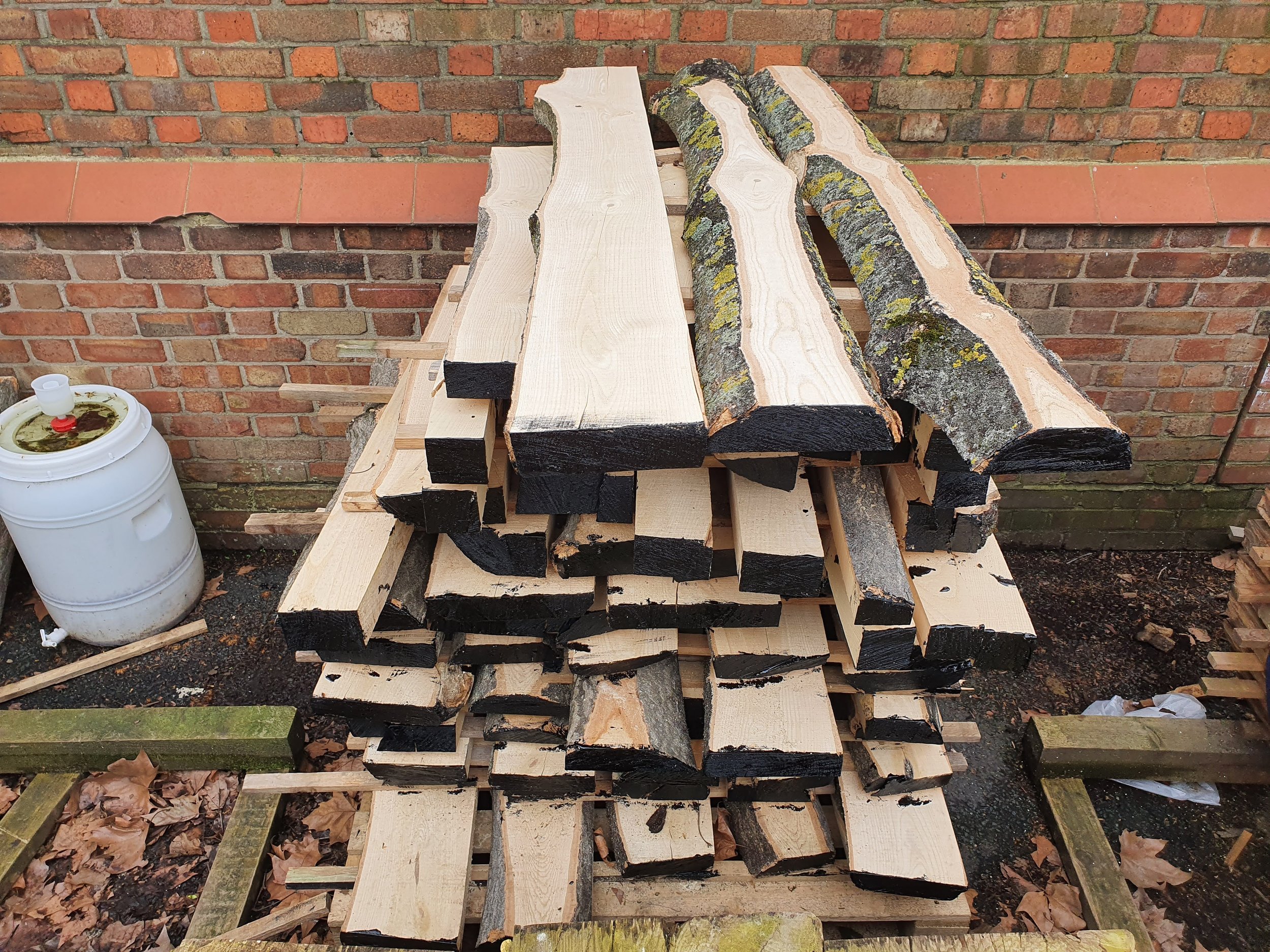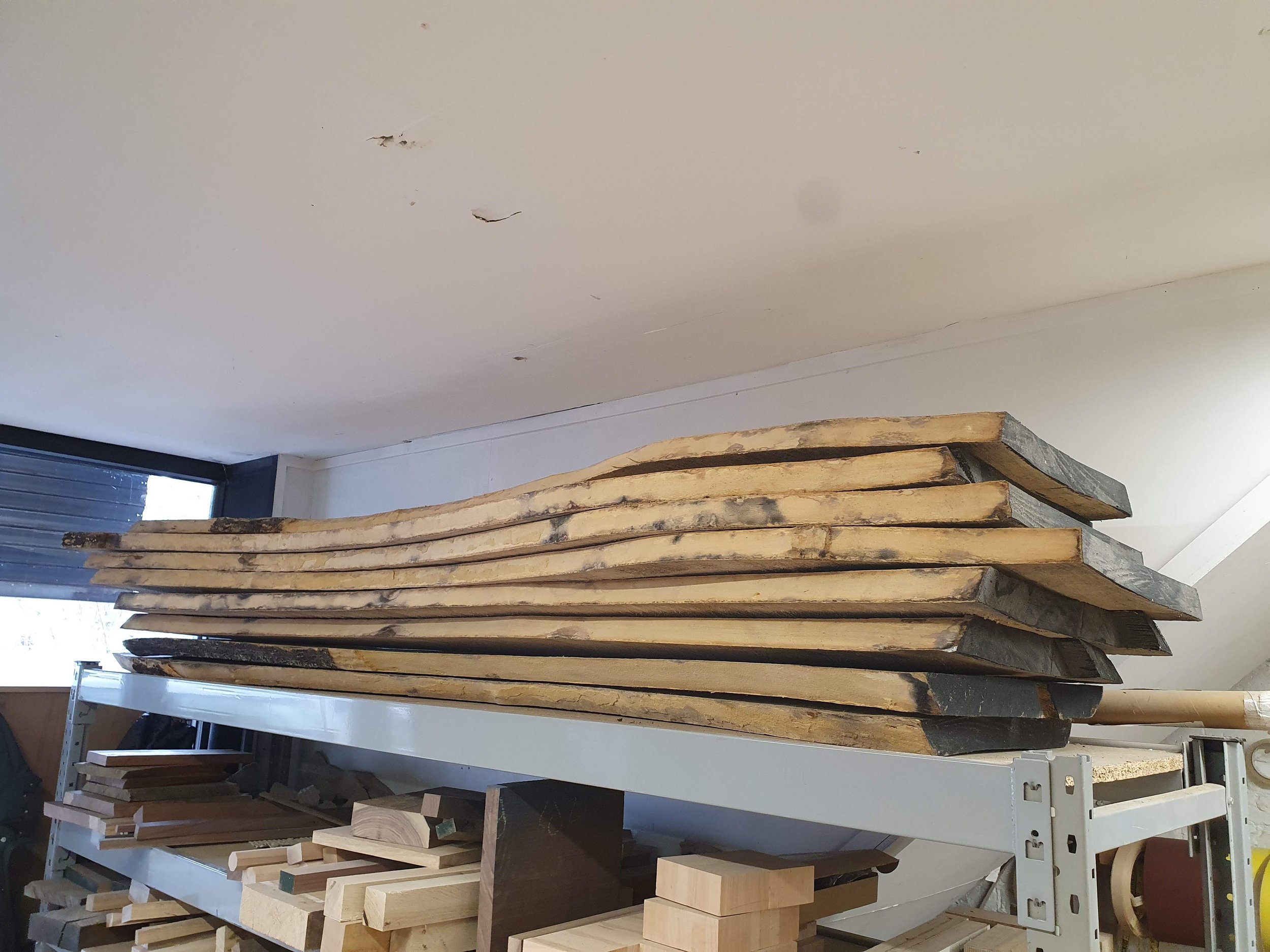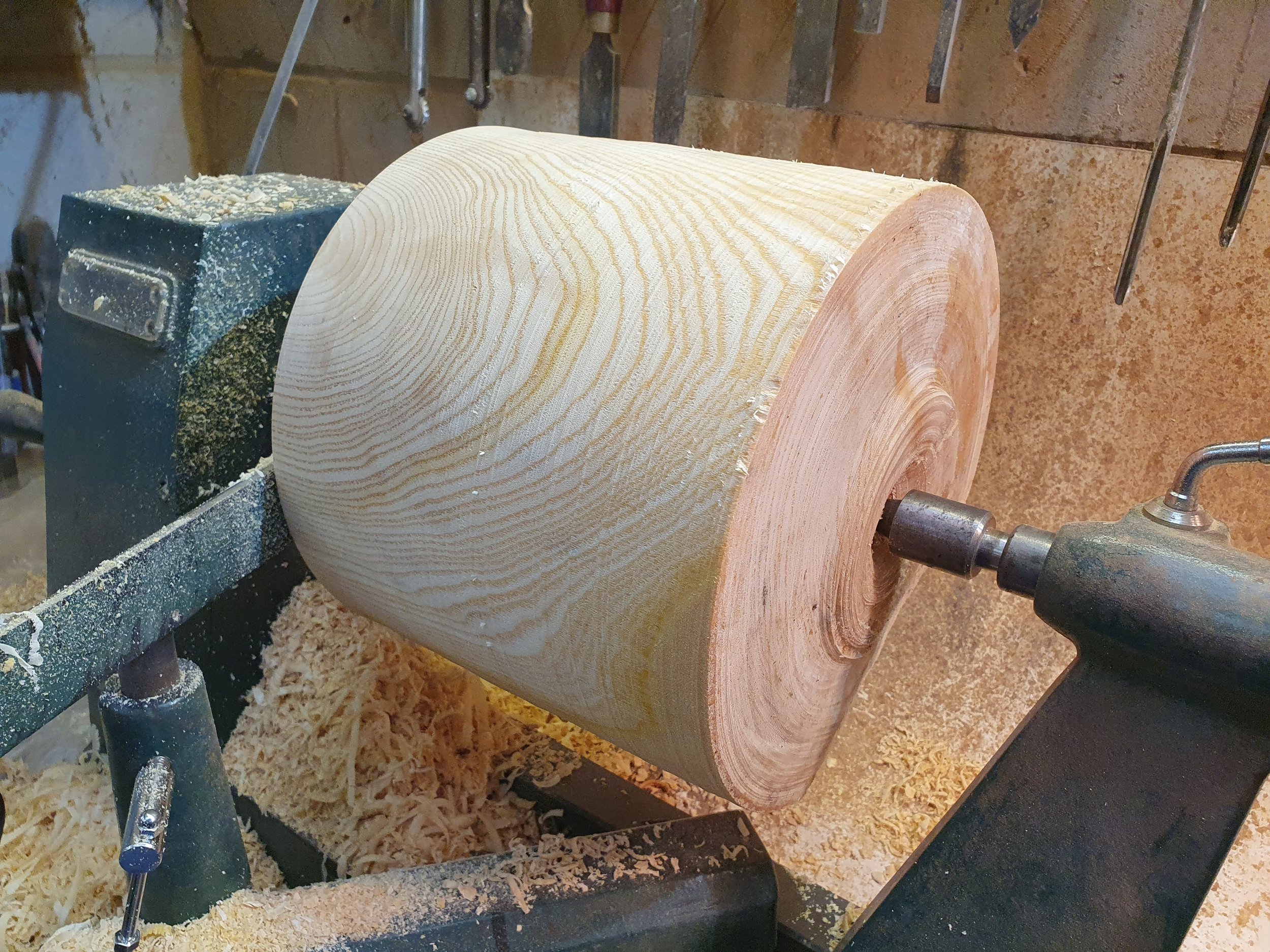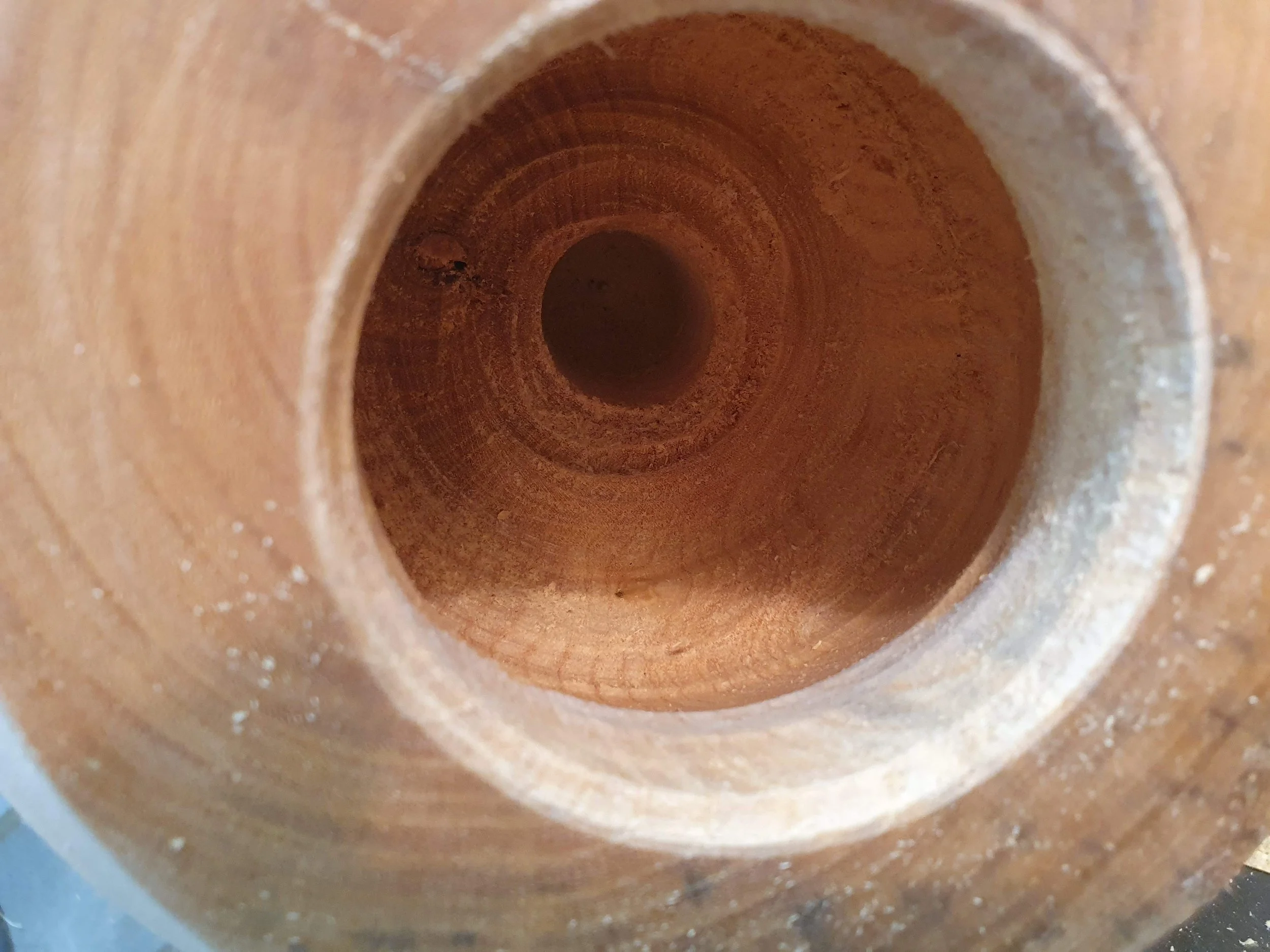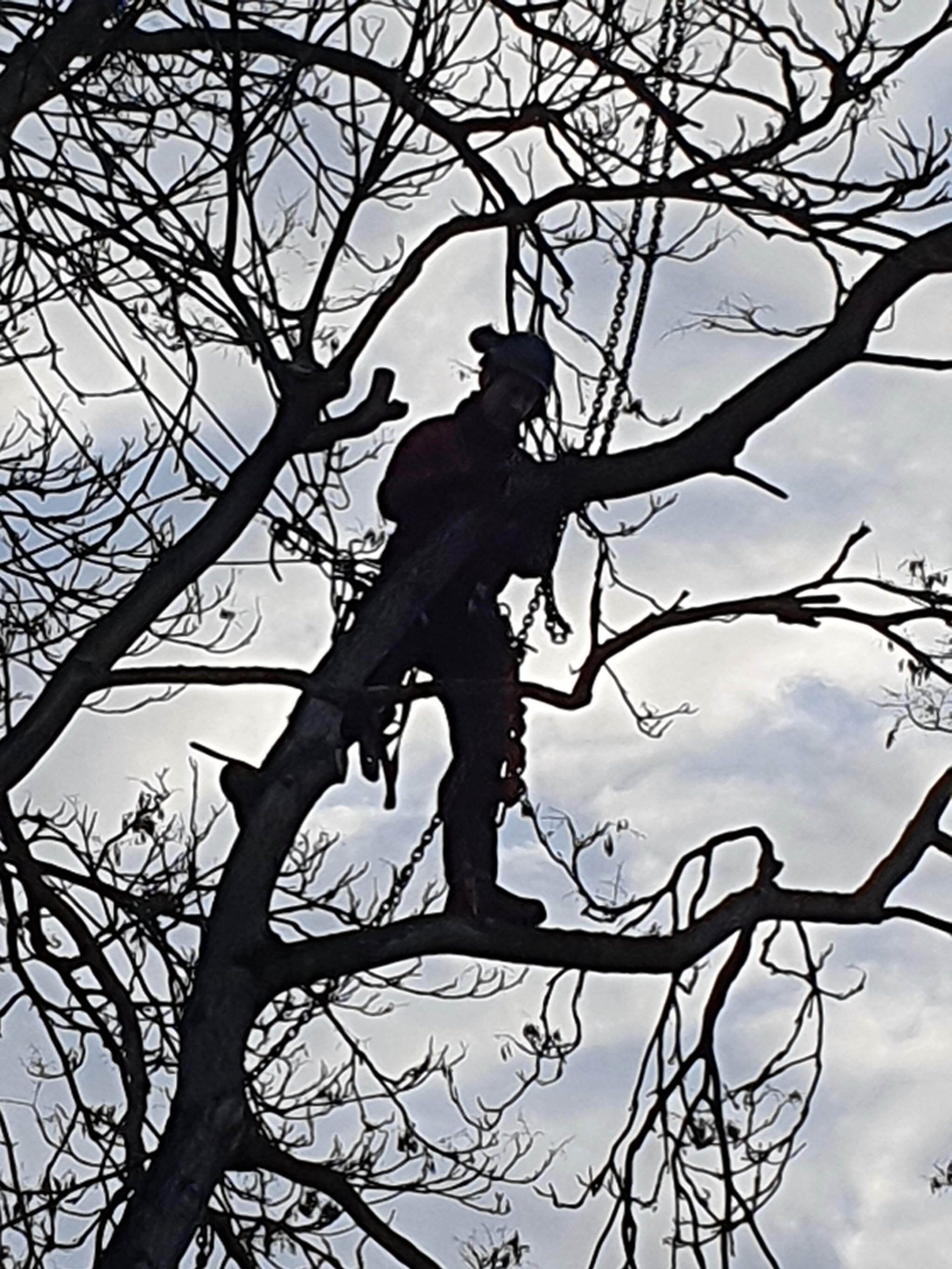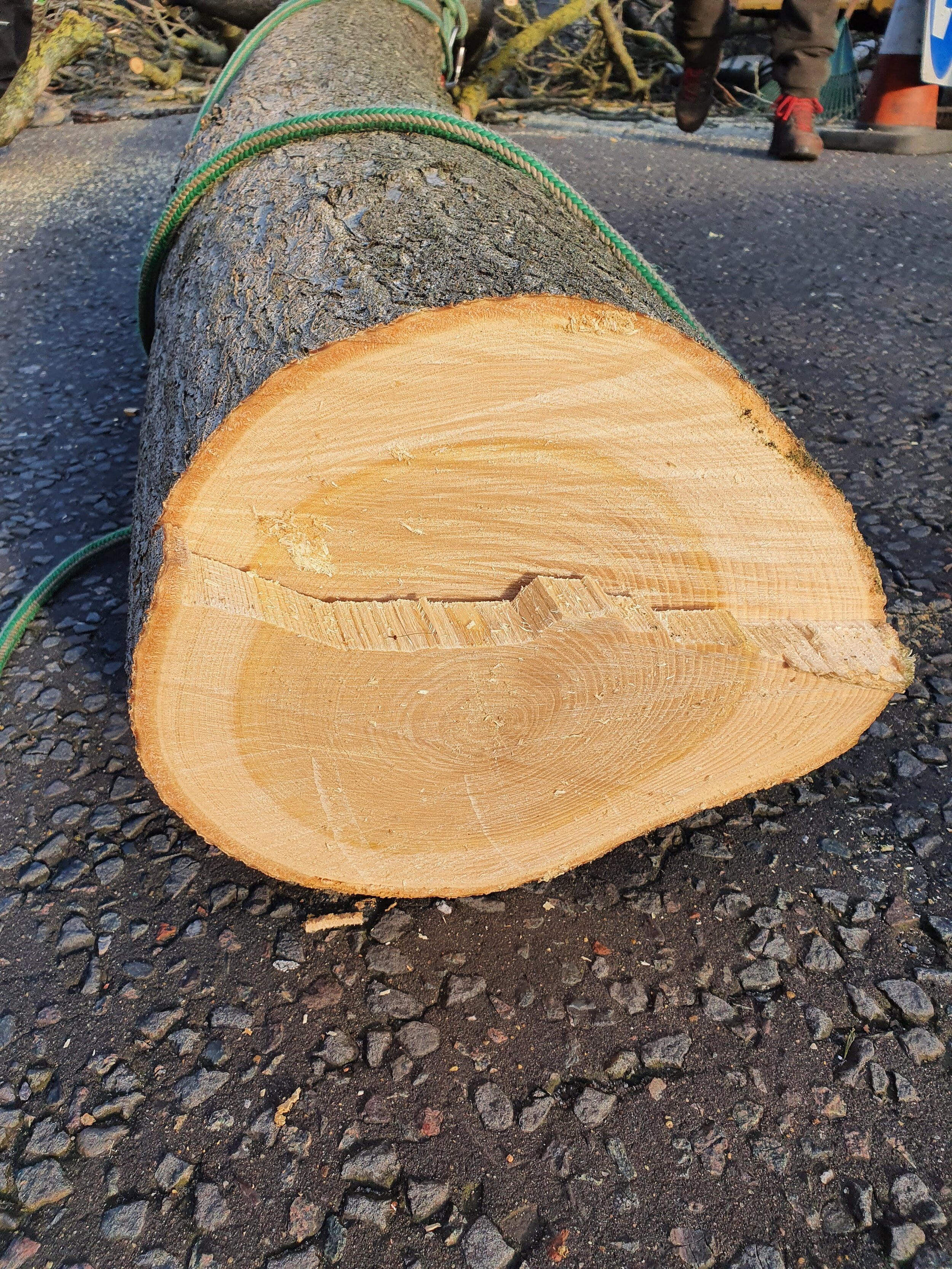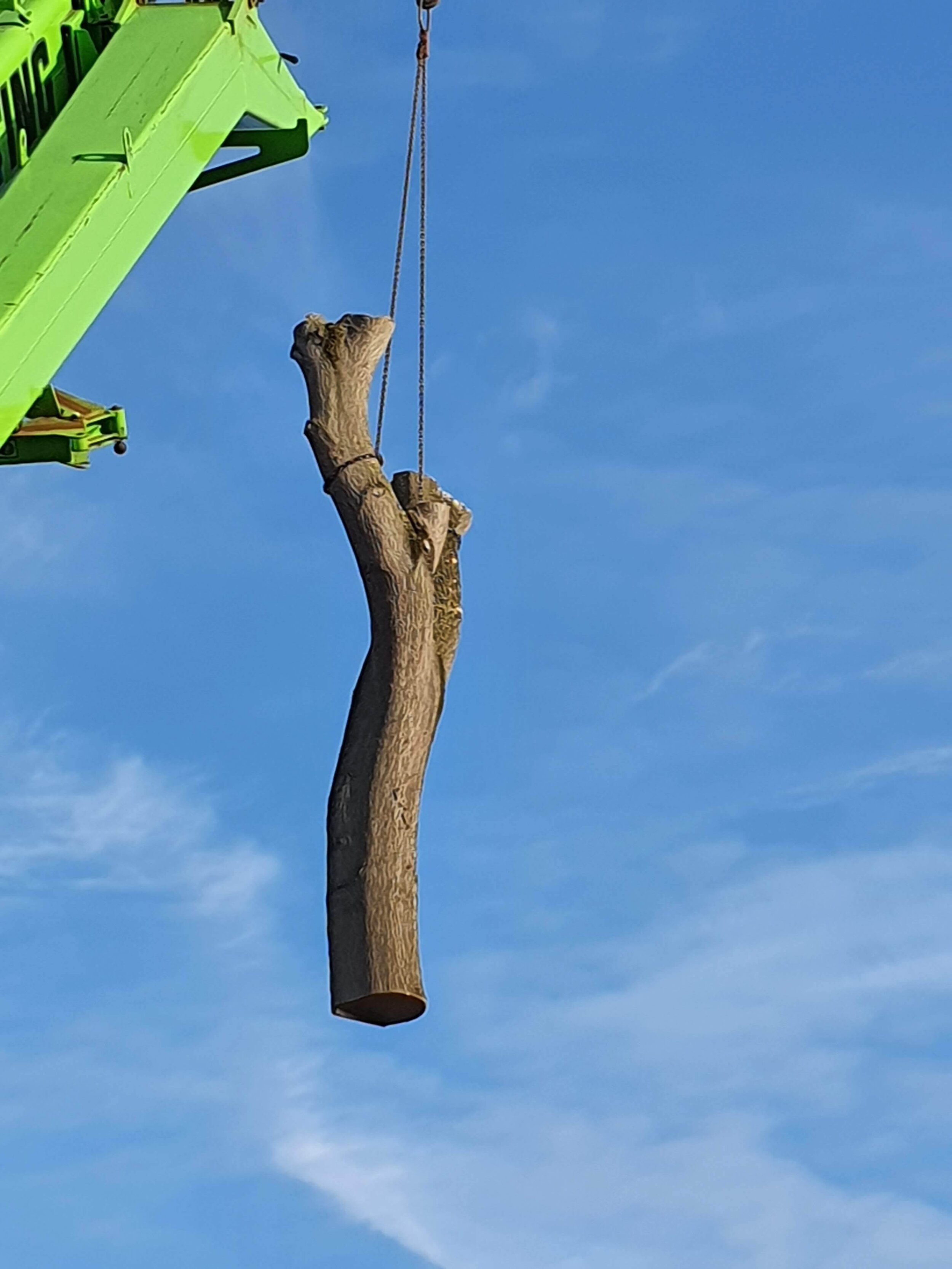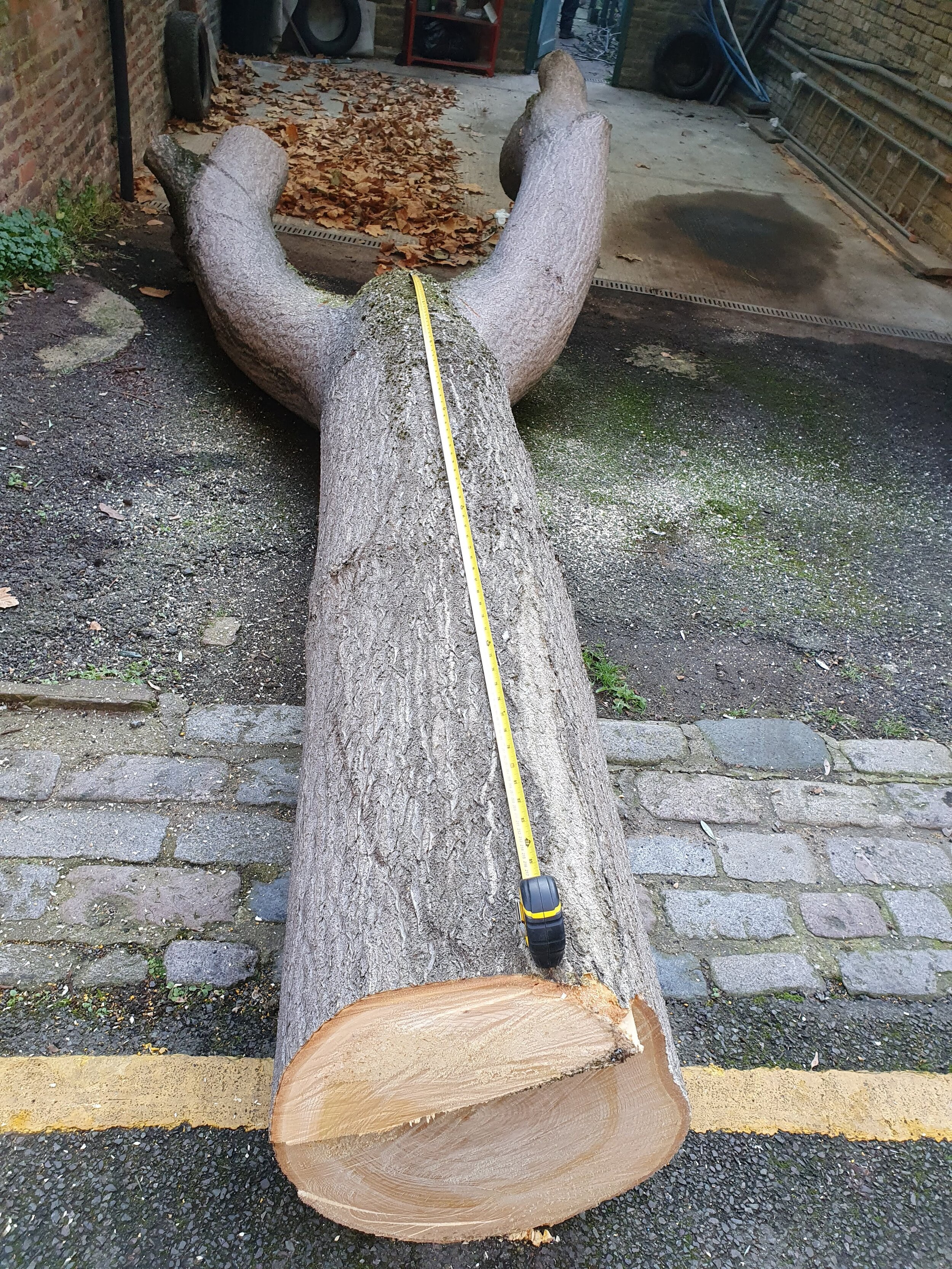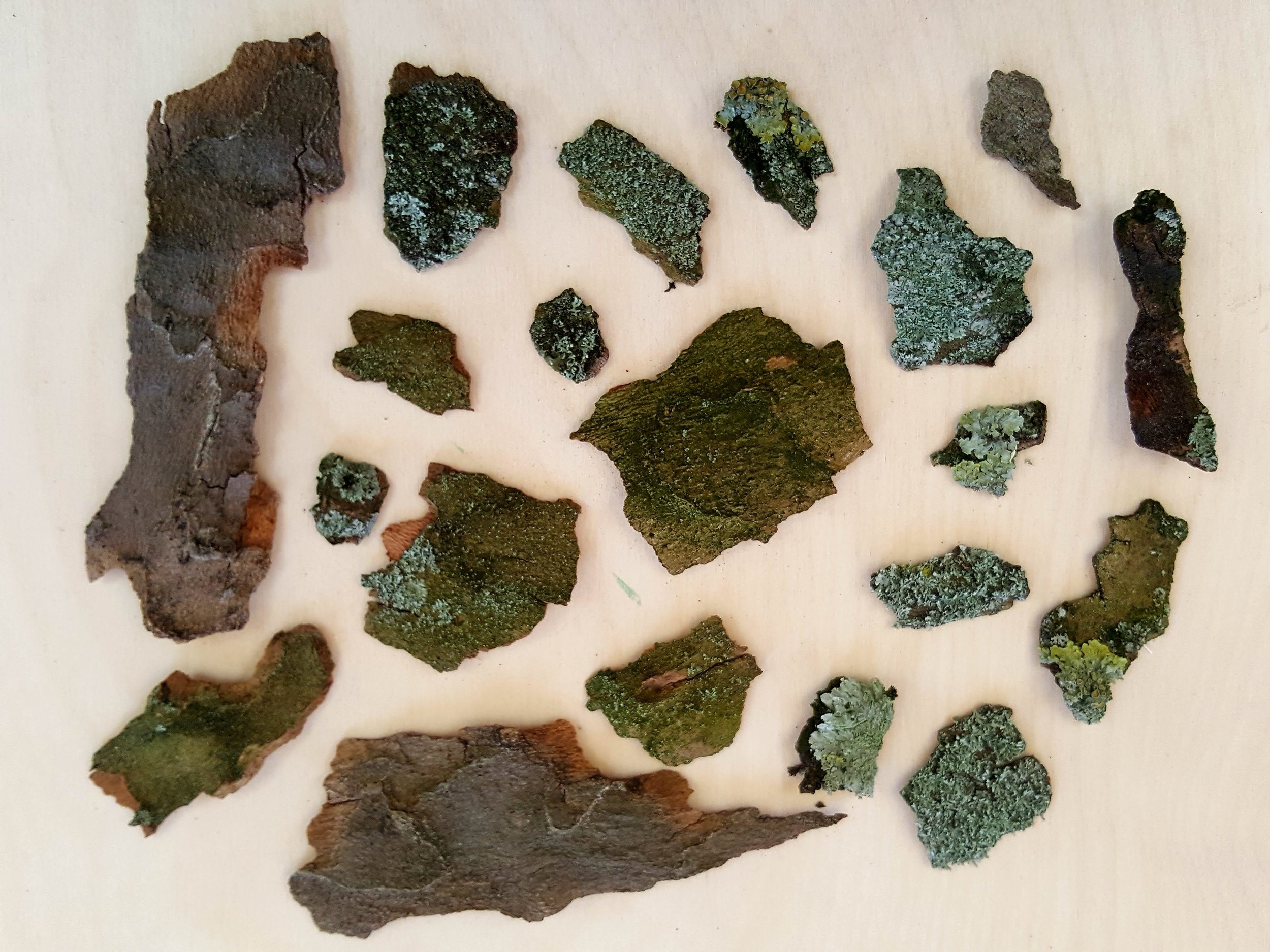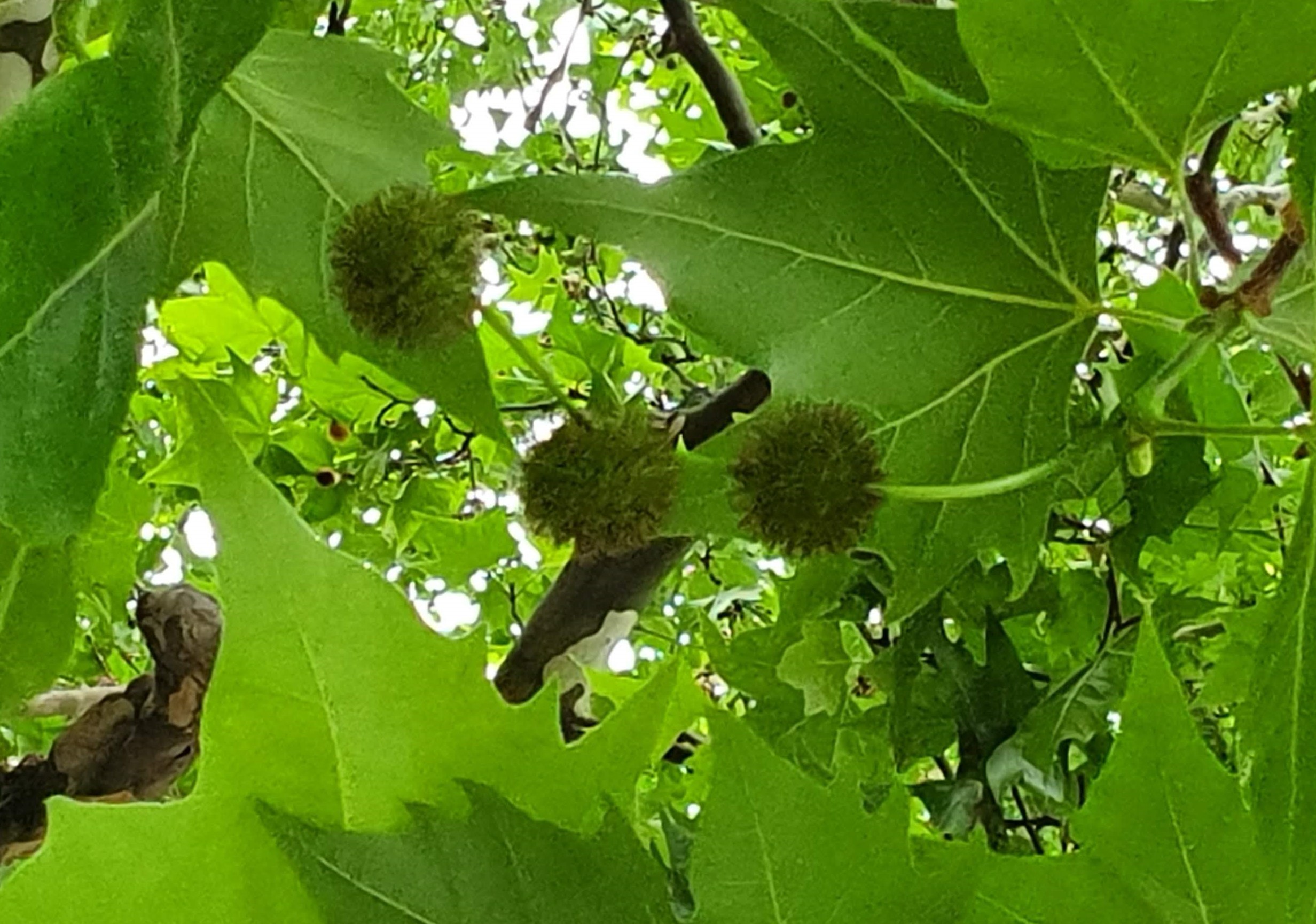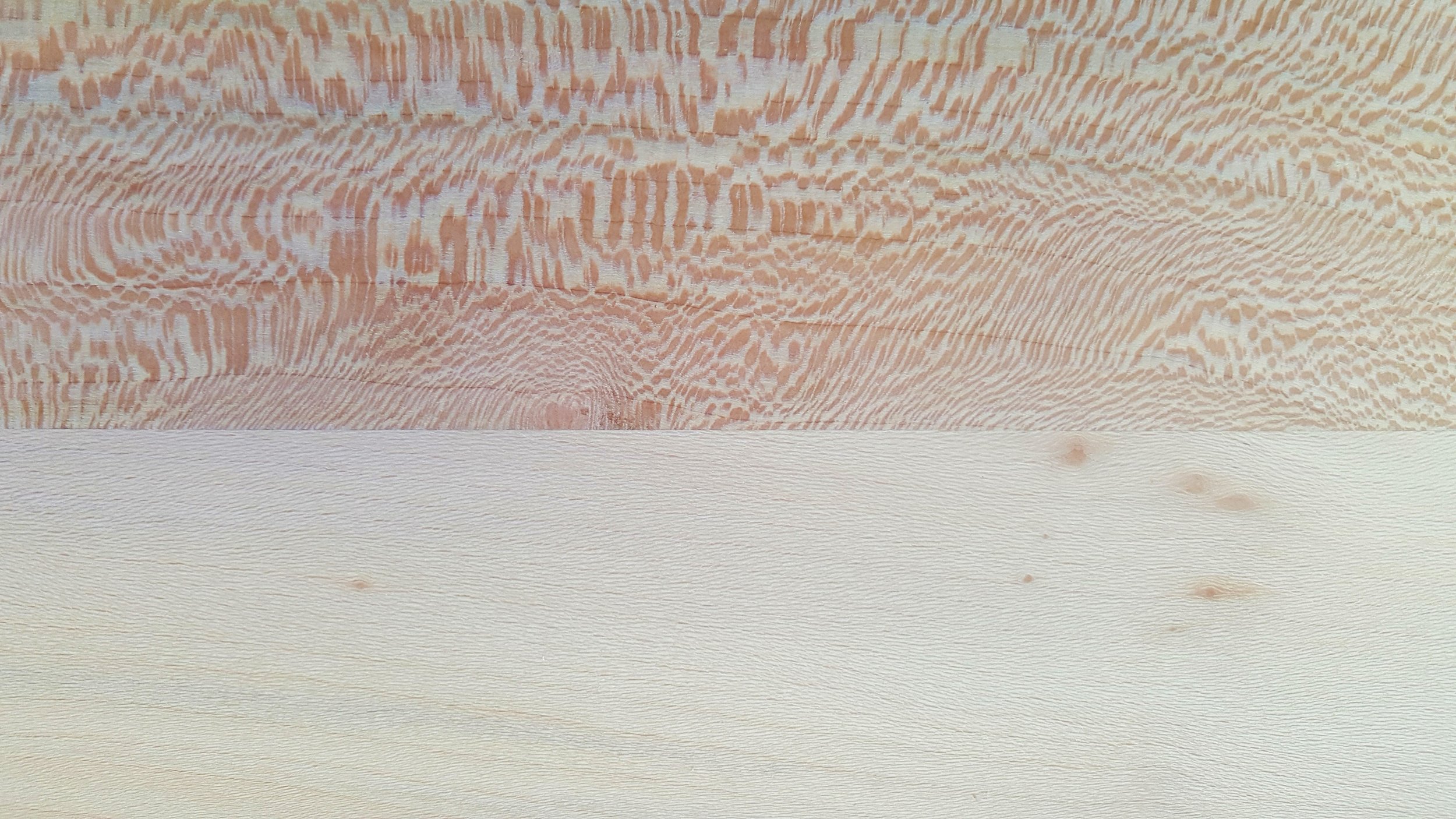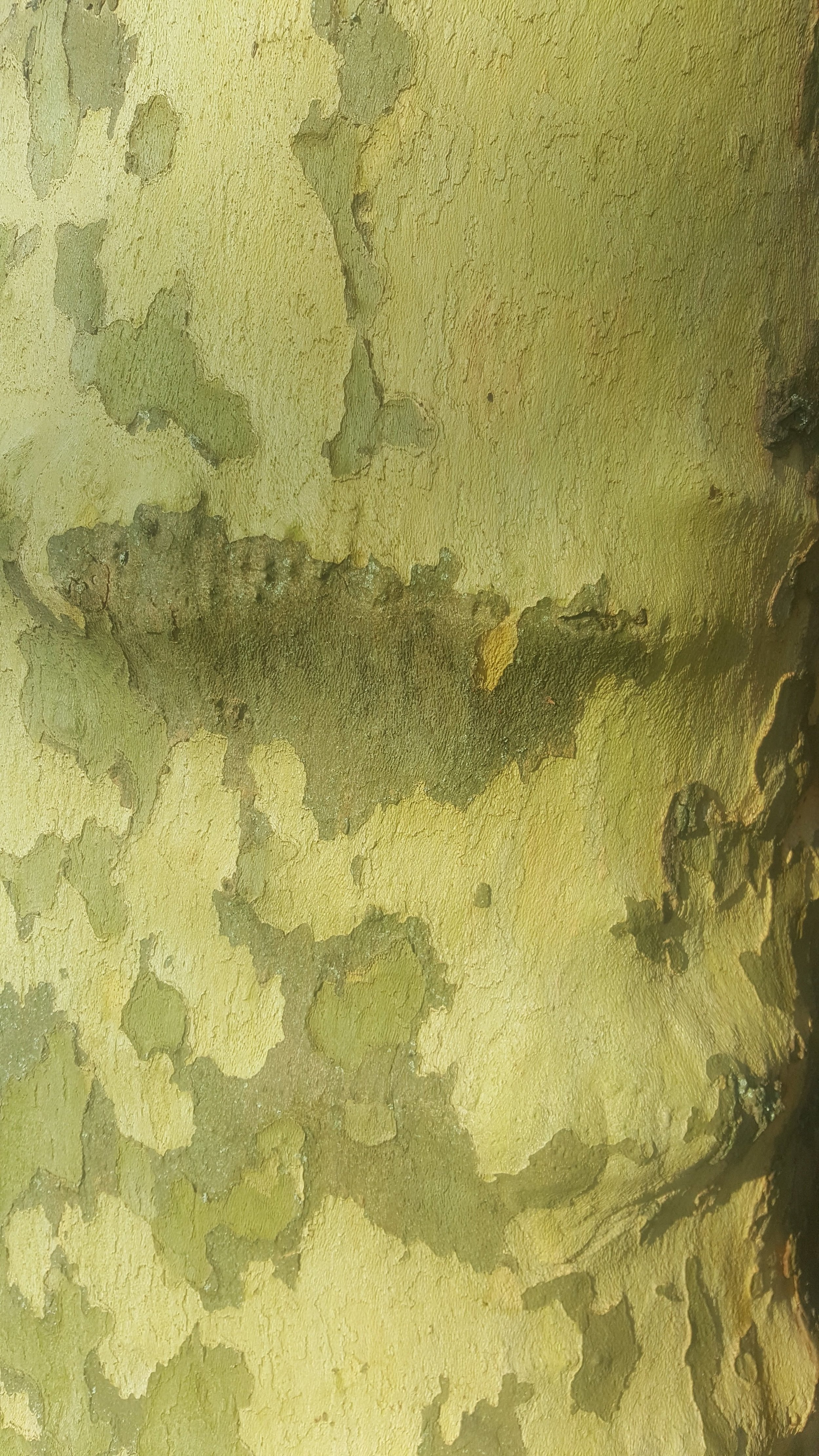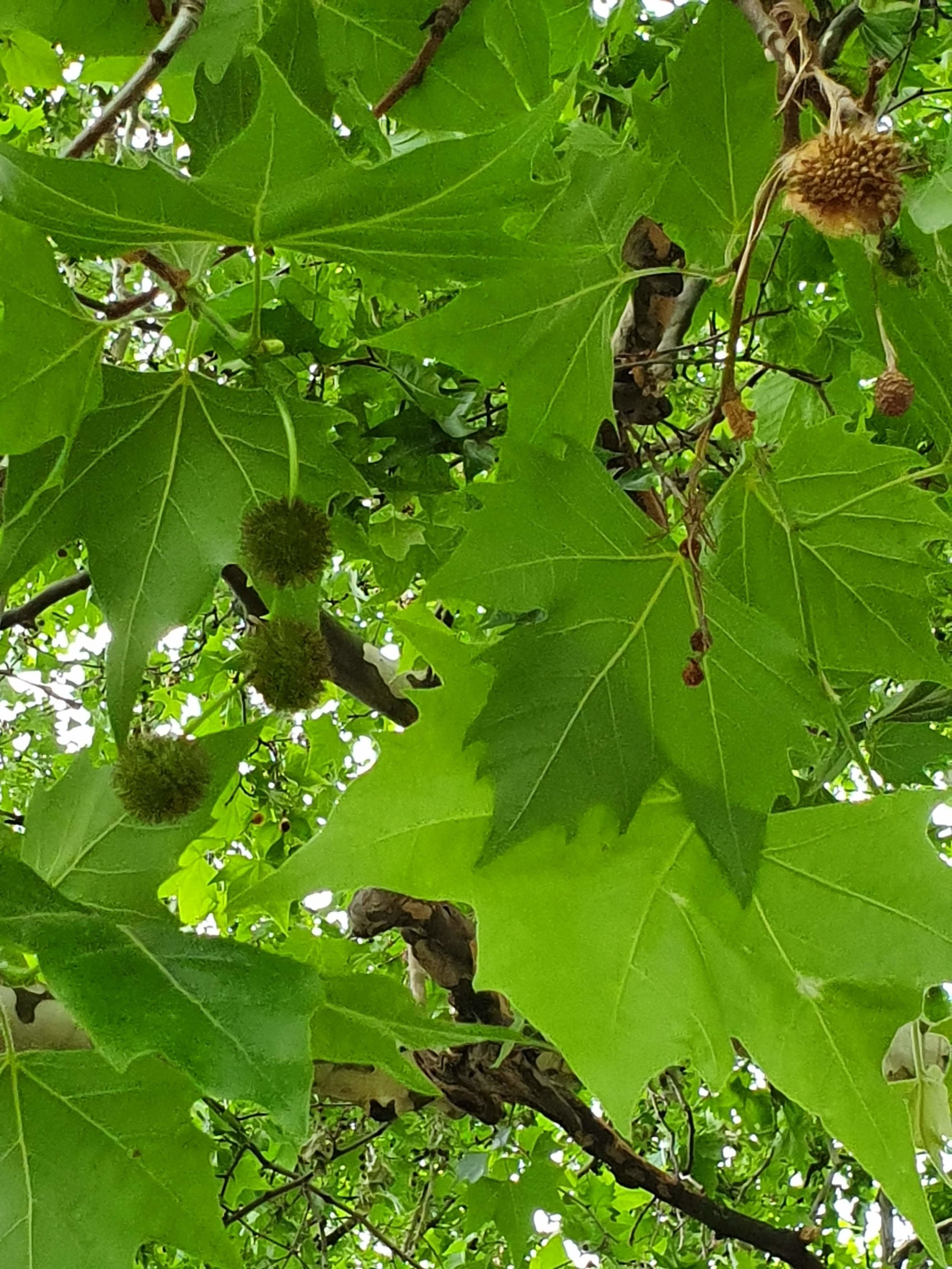These new freestanding pieces are cut from a single 5" thick slab of Elm, which measured 150cm long and 80cm wide. The tree that the chunk was cut from must have been gigantic before it succumbed to Dutch Elm disease in the 1970s.
As is often the way with this type of work it is the material that dictates the design. By keeping the form simple and clear, the natural beauty of the wood grain can shine.
A big thanks to Tom at We cut Stuff in Brixton for his great CNC advice and spending a whole day helping me tackle this enormous slab.
Future Icons Selects Art & Craft Fair - London Craft Week
This week over 70 Craft orientated makers and applied artists will be exhibiting in one place. If you are in London between the 9th and 15th of May, come along to the Bargehouse Gallery at the Oxo tower on the South bank.
There will be so many beautiful things to see and so many wonderful materials and techniques to learn about.
So many of the makers who have inspired and encouraged me over the last 10 years will be there. And I will be learning more I am sure.
Address:
Oxo Tower Wharf,
Bargehouse Street,
South Bank,
London SE1 9PH
The Tree of Heaven Project - Tonal variations and compliment materials
The consultation for the first piece of furniture has begun and the client would like a writing desk in dark tones, a reddish-brown colour markedly different from the natural pales of the Ailanthus timber.
I prepared several samples from the Ailanthus timber finished with oil-based stains from browns and reddish browns to reds and purples to silvery blues. The Ailanthus timber does not take water-based stains well and only oil-based products seem to work their way into the grain well. The natural colour is pale yellow white like American ash and can also be scorched very black. All of the samples were finished off with three coats of Osmo satin.
Making samples is an art in itself and an important part of the consultation process with the client. The knowledge of the clients varies greatly but most people who come to me are either wood enthusiasts or interiors professionals who know exactly what they want, even if its not a so-called natural colour or tone. Either way, the tone and colour of the sample needs to match the piece delivered and the further away you get from the natural wood tone the more important it is.
Always make a few samples from different part of the timber to see if the stain or finish penetrates the wood in the same way and make careful notes of which cut or part of a board works with that finish.
The Tree of Heaven Project - Stock
After 14 months air drying and a few weeks in the kiln, the processed boards of the Ailanthus tree are nearly ready to use. Now the timber has been moved to the workshop for further acclimatisation.
The wood has fared well through the process bar a few shakes and splits, the majority of which occurred shortly after milling. The boards where cut through with the chainsaw and I remember watching as the tension in the timber pull the boards apart almost as soon as they hit the ground.
Of all the boards that were milled, the top half of the tree, a wind swayed section seen in the above photo is very curved compared to the straight portion of the lower drunk. The client has requested a pretty modernist design for a desktop and the natural curve in the timber is sadly not appropriate to use this time around.
The Tree of Heaven Project - The project
The Tree of Heaven Project or the Ailanthus Project is comprehensive research and development project to process and reuse the timber from a tree felled in a family garden in Kensington, West London.
The Ailanthus grew steadily in the back garden a Kensington home for more than 50 years. A young family moved in with two boys, who spent most of their childhood climbing, swinging from, sheltering under and generally admiring the tall tree and its generous canopy.
Two years ago the owners identified a fungal disease in the base of the tree and sadly the tree was marked for felling before it fell down and hurt somebody. Rather than shipping in tree surgeon for quick chopping down and throwing the timber into the woodchipper, the owners decided to do something different.
To honour the unique provenance of the tree and their collective family memory, they decided to save the trees timber and engage woodworker and an architect to make the best use of the timber. The timber will be used to make two writing desks along with numerous architectural details including stair rails and counters.
The Tree of Heaven Project - Ailanthus Altissima
THE TREE
Ailanthus altissima /eɪˈlænθəs ælˈtɪsɪmə/, commonly known as tree of heaven, ailanthus or varnish tree is a deciduous tree in the family Simaroubaceae.
Unlike other members of the genus Ailanthus, the Altissima is found in temperate climates rather than the tropics, and native to central and north east China as well as Taiwan. From the 1700s onwards it has been cultivated in North America and Europe.
Its appearance most resembles the European Ash, with its pale, yellow white timber and its fans of pinnately compound leaves.
PEST
The Ailanthus is not a popular tree, not amongst horticulturists and not among the random people responding to my social media posts and blogging. It is extremely invasive when it is planted in non-native places it upsets the local ecosystems in numerous ways. Not only does it propagate much faster than the native species it has crowded next too but also secretes chemicals into the soil to kill off its rivals and any animal species it might consider a threat, potentially leading to extinctions and/or negatively effecting bio-diversity.
In the urban environment, where our tree had been growing for 50 years plus, the tree can cast itself across various gardens and parks, causing the same problems as in rural areas plus it can hit the built environment. Numerous cases have been recorded of the Ailanthus tree spreading its roots under the foundations of buildings, causing damag to the houses and also sewer systems and pulling up pavements.
Its quite a git.
The Royal Horticultural Society advises “If you already have these species in your garden or on your land, you are not likely to be prosecuted simply for having them. However, you are advised to control them and, for those 36 plants listed by EU, you are required to take all possible steps to remove them, even if you didn’t plant them. It is also your responsibility to ensure that they are not allowed to spread.”
EU Regulation lists the Ailanthus as an Invasive Alien Species. This legislation still applies in the UK. It lists Ailanthus altissima as one of 36 plants that you should not plant or cause to grow in the wild but in addition are banned from sale and gardeners possessing them should undertake measures to control them.
The Ailanthus Project awakens!
Turning Vessels & Objects #TREEOFHEVEANPROJECT
We will now start to turn the now kiln dried bowl blanks that we roughed out last May and June. Just out of the kiln, they have mostly survived the process without any large cracks or distortions. They are looking beautiful with potential spalting on some and at least some colour variation in the otherwise yellow to white Ash like paleness.
Most of the Ailanthus trees’ long trunk will find appropriate use in furniture table tops etc but I was keen to keep and use as much of the tree as possible and a great way to use the large knots, branch stumps and the like is to prepare them for the wood lathe.
The shapes we chose varied from the squat to the tall sided, some with wild, waney collars and some wild and cracked. I will endeavour to maintain their variety and individual characteristics as I finish them.
The Tree of Heaven Project - Re-milling & yield count
Yesterday we remilled and sticked the timber from the Ailanthus tree felled in Kensington earlier this month. A small tree, of a species we didn't know has afforded us a generous yield. Wide 35mm boards, endless short 54mm boards and 75mm x 75mm posts. And some interesting blanks for turning too! Thanks again to Mike and everyone at @goldfinchfurniture for helping me with this early stage of the project.
The Tree of Heaven Project - Milling Day
I was back in Kensington today to help mill the Ailanthus tree that was felled last week. And by help I mean marking up pieces of tree with chalk and watching experts convert it into usable timber. I learnt alot today and I am optimistic that the yield has been maximised.
The mill and the Milling
The milling was hard going, the sapwood is very gummy, especially just beneath the bark and the chainsaws clogged and became blunt after two 2 metre passes. The mill operators were slowed down considerably and needed to return the following week to finish the job.
Shakes or cracks in the timber are the most common challenge when it comes to converting threes into usable timber. Heart shakes occur along the centre of the tree, where it’s the oldest and most fragile. The middle boards, and especially the very centre board is susceptible to this and when we placed our central board onto the sticked pile there was a very loud crack as the board parted down the middle. Although this a challenge to the yield, the central board obviously very wide compared with the outer ones so two lengths of usable timber can be taken either side of the crack.
The other boards fared well with the exception of a few felling shakes at their extremities, and but only 10 to 15cm from the ends. Felling shakes caused by the trauma of the felling process
The Timber
As a European furniture maker, I know very little about the Tree of Heaven and in the next few weeks I endeavour to educate myself. I had read that the timber resembled European Ash and was noxious when milling. As we started to mill through the body of the trunks, the characteristics of this Ailanthus tree started to reveal itself. Although, the timber was not smelly at all when cut, the timber did indeed resemble the pale, grey-yellow of Ash. The very heart is a golden brown and the sapwood paler than the main body but similar enough that some will be robust enough for use.
Yield
There are numerous blanks ideal for turning, especially those cut from the confluence of the limbs or trunk and limbs, where the timber is more colourful and varied in its figure. Elsewhere, there are potential greenwood working opportunities and at the bottom of the priorities, some rounds and odd shaped but small pieces for outdoor furniture.
The Tree of Heaven Project - Felling the Ailanthus
Today saw the start of an exciting new project for 2021. This ailing Ailanthus, or Tree of Heaven, was chopped from a very narrow space in Kensington by the skilled chaps at The tree company.
Tree surgeons and crane operators are highy skilled legends.
After a good deal of consultation with me and the client, the tree surgeon clambered up and around the tree, shackling parts of the crown and cutting them free. These upper branches are unusable for timber so they were removed in two large pieces with brash and all attached. It was very dramatic to see what was essentailly a small tree pulling away and floating through the air. I stood and watched and nodded and gave the thumbs up and tried to keep warm in the cold January weather.
Then the surgeon worked his way downwards, applying precise cuts at positions we agreed to help maximise the yield while the crane company worked their magic. The communication between the crane driver and their man on the ground was amazing. The driver sat in the cab on the street, unable to see the tree, the surgeon or his colleague but managed to pull out all the material, including the trunk from its base from the small garden and onto the road without touching a thing. The client has a carport just below the canopy of the tree and not one piece of the felled tree touched it, let alone crashed through it, as predicted by many.
The chipper is a beast that snatches the brash and smaller branches and devours them. The background, bone crunching sound is a constant reminder of what usually happens to felled trees but also of the the triump of the day . Whatever we salvage of this tree is better than the greedy demands of the chipper.
The yield at first view seems larger than predicted, the tree is in good condition above the root. There is a little rot or disease at the base of the tree but it has been caught at the right time and only extends into the timber about 15cm. The trunk of the tree was felled in two pieces at 220cm long, which as an initial observation is adequate yield for the proposed projects. Desktops, for example can be made from the trunks, while the two major limbs will offer material for leg posts and narrow rails if they can be put in the kiln. Further to that, I retained countless small rounds for turning blanks and making greenwood items for the garden.
Ebonisation process in three stages - London Plane Lacewood
Burley & Daughter demonstrate the art of timber ebonisation, running through the three stages of the process; the preparation of the timber and the extraction of the tannins, the application of the ebonisation solution and finally, the finishing with WaxOil.
The London Plane Project - 8. Batch production using a CNC machine
The final experiment in The London Plane Project was to create a small batch job on a CNC machine to explore the materials value in repetition and uniformity. I drew a picture of a London Plane leaf and imported it into software for the CNC machine to mass produce. I would finish these leaves by hand being careful not to alter the faces of the leaves and their uniformity maintained.
Regarding Software. I started by using Autodesk Fusion but this heavy and complicated software is more appropriate for complex, multi layered models and also the more geometric. The simple yet organic image of the leaf was more suited to another application – Vectrix, were I imported my vector directly into the application without the need to extrude or further manipulate.
Observations on it working. Some of the stock twisted over the weekend and the cutter passed through deeper at one end of the stock to the other but with planning and sanding this discrepancy was easily removed. And despite my worries, the sharpness and speed of the cutter passed over knots without exploding the stock. This was a simple job and problems only really occurred during the setting up of the machine itself and once tested the cutting out of a leaf form was never going to be a challenge from a milling point of view.
Ultimately, repetitive uniformity is what was needed and this is what has been achieved - the different figures and grain pattern has been accentuated when captured within the standardised form. A fitting finish to the London Plane Project – showcasing the variety of tones and textures from one timber.
The London Plane Project - 7. Using London Plane as a wood Dye
My next experiment with London Plane was to use various parts of the living tree to stain seasoned timber. I tried different leaves off different trees but the waxy leaves didn't really break down, even after a couple of hours of patiently adding water and mordant and not letting it dry out. The bark created only a brown colourisation. I eventually elected to use the Button balls or seed containers that you find on the London Plane tree - a sort of soft conker.
I chopped the material up very fine and then added it to the boiling water and then reduced it down as much possible. I spent two hours adding water. I used Alum as a mordant as it was readily available and because its powdered I guess, I found it easy to judge the appropriate quantities needed during the process. I added the Alum while the simmering vegetation was still on the stove and so easily settled on the right consistency and colour. When I was happy I removed from the heat and let it cool down. Once room temperature I used a Muller to grind it down to a fine pulp.
When applying to the timber, I selected the palest stock I could fine and finished it to 240 grit and then prepared it with vinegar water solution. Once dry I cut back the raised timber fibres with a very fine abrasive and then applied the stain generously.
The result is not at the brilliant end of the colour scale but is certainly worth the small amount of effort producing a chalky green – not unlike French Grey.
London Design Fair - Truman Brewery Sept 19-22. Visit me at stand 10.56 in Hall 10
Visit me at stand 10.56 in Hall 10
The London Plane Project - 6. Steam bending London Plane
Timber selection is always important when it comes to steam bending and selecting the right Lacewood is no exception. Is the grain straight enough but still have character? Is the timber free from knots and defects? I could not find any advice regarding the steam treatment of London Plane, quarter-sawn or otherwise or how it ranks in the advisable or not chart (Oak and Ash being at the top of the chart).
In the spring of 2019 I made a steam chamber from redundant aluminium ducting, put to good re:use after changing my extraction configuration last year. Inside I placed two aluminium poles and the timber stock sits on these with very little contact – allowing good steam circulation. Although the chamber gets very hot to touch it circulates the steam well and I am able to manage how much steam is contained and how much is released for pressure control.
I have experimented with some very tight curves but even on very thin stock, the lacewood snapped when pushed towards 300 degrees. So many splits and snaps! However, the dressing table now being made to show at the London design Fair has gently curved leg rails and mirror stand, and this curve proved no challenge and with a simple dowel jig (rather than a comprehensive forma), the rails came out as intended.
I love this technique so much that I intend to build a 2m long steam chamber and although I wont become Joseph Walsh overnight, I think I have enough of a handle on it to work on some more ambitious projects (in Ash!)
The London Plane Project - 5. Gouge Carving – The mindfulness drift
I am a cabinet maker, a furniture maker – not a carver. My work is structured and organised using technical drawings with precise dimensions and working the figurative and tonal palette of a familiar timber. There are basic engineering rules to be adhered to and techniques that are studied and practiced and enhanced over a period of time. This foundation does not invite much innovation or risk taking and generally I wouldn’t attempt to do things that I have learnt properly.
I have had no training on carving, even on the basic textural stuff I use, and I have done very little reading. I bought tools that I liked the look of and liked the feel of in my hand and just got on with it. This approach is unburdened by expectation or ideas of perfection and has had two major impacts on my practice. The first is the thoughtless drift it sends me into - a mindfulness I guess, which has all the associated benefits to my wellbeing and is a lot of fun. Secondly it adds a randomness or wildness to my work. This randomness isn’t just a decorative motif added to the restrained lines of the furniture but is also a way of adding narrative value – piling up layers of visual and textural detail. The viewer/buyer can see exactly what I have been doing and understand the time and effort that has been applied.
Its interesting that despite knowing nothing about carving when I started, it only took a few days before I began to collate my own rules on technique; specific to London Plane and the chisels I was using. So obviously I started to develop expectations of myself and then anxieties when I thought these expectations would not be met. Not only was tacit knowledge built around my use of the chisels and the feel of the material but also around ideas of quality and work ethic. Typical! Anyway, it was still fun because I was achieving what I wanted, or close to it.
This is what I learnt;
1. When holding the chisel, hold the chisel as low down to the timber as possible and support the blade with the other hand.
2. I am using a - Dig the centre of the cutting edge in into the timber and scoop upwards.
3. The direction of the grain is so important to how evenly spaced the gouges are, how consistent their sizes and shape. I carve slightly across the grain – gouging along the grain is tricky to control and carving directly across the grain produces a very rough finish to the gouged depressions.
4. Randomness in shapes, pattern and quality of the gouged depressions also depend on the wildness of the feathered or lacewood figure and the amount of sapwood. You can get very different results from each particular square cm of timber so always pay attention to how the character is changing across the timber, especially if the panel consists of several butt jointed boards.
The London Plane Project - 4. Ebonisation
As part of the London Plane Project I have experimented with ebonisation, a process of darkening or colouring a timber in a natural and respectful way – i.e. without the use of noxious chemicals or without covering the grain and figure of the wood in paint. An ebonising solution reacts with the tannins that naturally occur in the wood - acidity in the sap to be precise.
London Plane doesn't have a lot of tannin in it so it doesn’t turn jet black as with Oak or Ash but everything from a blue grey to an ashen green, either which works in perfect contrast with the un-ebonised lacewood.
Making the ebonising solution would appear straightforward – add steel to vinegar and leave for at least two weeks. But, as you might imagine, this is the least of it. That is merely the foundation. Through several rounds of experimentation, I have worked out the following about the ebonising solution;
The solution needs to be quite old, like craftspeople and wine, it picks up qualities through its maturity alone.
It needs a lot of rusty old pieces in it. At first I thought it may get redder in tone but no.
And it needs to be exposed to the air as much as possible. It will evaporate if left perfectly uncovered but try to give it lots of air daily.
Application. When using the solution prepare the timber with a tannin heavy liquid such as tea or red wine (the red wine bringing out a deeper blue - see image above). This draws out the tannin in the timber to make the reaction stronger - especially important for a timber like London Plane. Strong tea is perfect, the wine is powerful but does make the final colour redder. Rules;
Make sure the tea completely dries before applying the ebonising solution, the pale patches left on the wood is where the tea was still wet!
Cut back the timber after the tea has dried with some of those grey Mirka pads or something very fine.
Apply the solution consistently as if a stain or a paint – it will streak and blotch.
Wear double gloves. The stain on your hands are extreme.
Ebonisation has undoubtably added a new dimension to London Plane and the Lacewood in particular. Not only does it expanded the tonal possibilities of the finishes available but with the quarter-sawn Lacewood it accentuates the iridescence of the medullary rays while flattening the tone of the field behind them. I love it!
The London Plane Project - 3. Working with Lacewood & London Plane timber
Lacewood can be difficult to work and often traditional hand tools are most helpful in converting and shaping the wood into furniture and objects. The medullary rays leap in all directions and working the timber with machines can pull the fibres up and out - leaving deep unrecoverable tears. During the making of the pieces for the project I used a wire brushes, rasps and files, a cabinet scraper, a travisher, a spoke shave, bevel and gouge chisels and hand planes and hand saws. However, where the character of the timber was less tricky I have used hand routers, router tables and the CNC machine for my final experiment.
Edges, Facets and curves
When shaping the dressing table in (mostly) wild lacewood, the hand tools came to the fore. I wanted to bring out many of the visual characteristics of London Plane in one furniture pieces. As well as hand cutting and chiselling the dovetailed drawers I used various hand planes to finish the edges of the top and hand carved and gouged certain areas to add a textural dimension.
Using the spoke shave
My favourite tool is the spokeshave, a squat two handed plane that removes material in a localised area. They come in both a convex and a concave profile. I use a convex profile to scoop facetted depressions into boards and legs.
In this video I am using the spoke shave to shape a curved facet on the inside leg of the dressing table. I mark out accurately the area to work and with a very sharp blade, position correctly and held tightly. I start removing material from the centre of the facet and work outwards from the centre towards the extremes, eventually working the whole length to create an even and smooth finish. As I cut through the medullary rays at roughly 45 degrees, facets expose another weight of lacewood figure that looks halfway between the wild lacewood on the front face and the regular London plane on the outside face.
The London Plane Project - 2. Timber of the London Plane
The timber of the London Plane is uniquely exotic and varied in its appearance for a homegrown timber. The young pale tone to the mature timber with its orangey tea brown colour and every shade in between. Then there are the black streaks of the Blue Stain fungal disease and then the fortuitous spalting effect when the blue stain meets a second fungus and the two fight it out until clear black lines are formed along their battle lines.
This fascinating timber can reveal yet more character depending on how it has been cut when converted from a tree into timber. London Plane has wide and twisting medullary rays, often iridescent structures that grow perpendicular to the grain which surface in decorative flecks. They look beautiful in Oak, consistent and even in Beech but outrageous in London Plane. These fantastic rays are revealed by quarter-sawing the tree rather than sawing straight through. The medullary rays grow perpendicular to the grain so to reveal this prime quality of the timber, you saw the logs perpendicular to the surface (as best as you can on the round) and in four quarters. As you can see from the diagram below - this is much more wasteful than a plain cut straight through the boards and is subsequently more expensive to purchase.
Quarter sawn Lacewood and regular London Plane
My first major work using London Plane was a timber re-use commission for Lend Lease for their Elephant Park development at Elephant & Castle in South London, making furniture pieces from timber felled on site. I was immersed in this project for several months and looked at and touched nothing but London Plane, dealing with its various idiosyncrasies and qualities. However, the first London Plane timber I used was supplied by friend and woodworker, Jeff Segal, who spotted a fallen giant in the garden of a West London vicarage. A Lucas mill - a mobile milling system involving a chainsaw was called in to convert the tree into timber. An account of this can be read on Jeff’s Blog.
The London Plane Project - 1. The Life of the London Plane Tree
Platanus × acerifolia, the London Plane, the Plane tree, the American Sycamore, Platane, Platano. The variously named and most useful of city trees, the London Plane tree can be found planted and mature on the avenues of most European and North American cities.
The London plane is the perfect city tree, dealing with the street pollution by absorbing it into its bark, which it then sheds like battered pieces of armour. This is what gives it it's mottled camouflage look - particularly visible in the springtime before leaf growth. The bark appears to shed on a natural cycle rather than as a response to specific, localised pollution. Certainly, the London Plane trees in the quieter streets of Bermondsey appear to shed as much bark as the pollarded soldiers along the South circular in Catford.
The tree has broad, five lobbed leaves which gives it a resemblance to the Maple and the Sycamore, neither of which it is related to. The conker shaped flowers/fruits, or ‘button balls’ as some would have it, hang down in twos or threes on long storks and appear to be flowerless. In fact, the Plane does very well without the fluctuating bee population as it produces no nectar (like many conifers) and is propagated on the wind when, in early summer, gusts carry the flower dust across the streets and park of the city.
The London Plane was formally described in botanical literature by the Scottish botanist William Aiton, in his 1789 work ‘Hortus Kewensis’, as a variety of Plane Orientalis. It is in fact a hybridization of the Plane Orientalis and Plane Occidentalis, which were planted close to each other in the 17th century in, depending on your favourite story, Spain or at Vauxhall Gardens in London. I will believe the later story for myriad of reasons, but mainly its proximity to what would become the infamous pleasure gardens.
In the early 19th century the trees spread through the great parks and other public spaces. The British library and the Kings College Library in London hold extensive records of planting schemes along with London Plane related newspaper stories. There are accidents noted that involved the trees, disputed property boundaries which passed through trees and in one incident, a man was prosecuted for selling a poisonous tea (made from London Plane leaves) to the unsuspecting visitors to Hyde Park.
But it was in the mid to late 19th century that the Plane began to be planted in greater numbers along the city streets and near factories, specifically to soak up the soot and dust from the gathering industrial revolution. The population has been supplemented many times since, with planting schemes both public and private. Bizarrely, it may be their very ubiquity that renders them invisible to most people. Spot one and give it some thanks for giving your city a little more breathing space.




